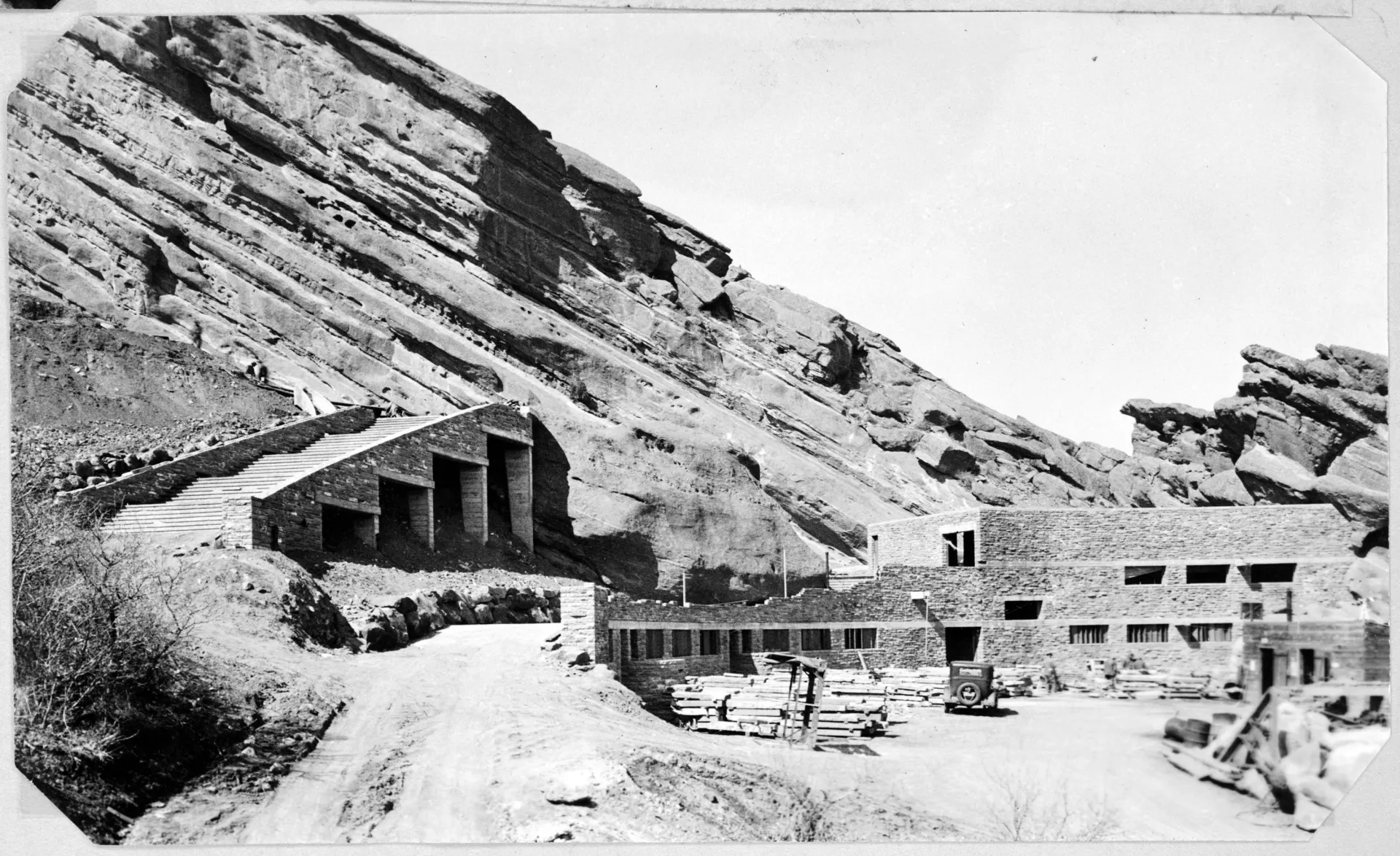Colorado, a land of majestic mountains and breathtaking landscapes, is renowned not only for its natural beauty but also for its fascinating gold mining history. Red Rocks Amphitheatre, a unique architectural marvel built by the Civilian Conservation Corps (CCC) during the Great Depression, stands as a testament to human perseverance and ingenuity. However, few realize that Colorado’s gold mining history extends far beyond this, intertwined with legendary gold mines and tales of arduous journeys.
On May 9, 1936, Denver Mayor Benjamin Franklin Stapleton and Parks Manager George Cranmer received approval to utilize the CCC to construct the Red Rocks Amphitheatre. This project, like many others during the Great Depression, provided employment for thousands and contributed to Colorado’s development.
Red Rocks Amphitheatre: A Witness to History
Red Rocks Amphitheatre is not merely a renowned performance venue; it’s a significant part of Colorado’s history. Constructed by the CCC, an organization established by the Reforestation Relief Act of 1933, the amphitheatre symbolizes economic recovery and community spirit during challenging times. The CCC provided jobs for unemployed men, conserved forests and grasslands, and built valuable infrastructure for communities.

Architect Burnham Hoyt skillfully designed Red Rocks Amphitheatre, maximizing the area’s natural terrain. Following approval from the National Park Service, the CCC began leveling the seating area between Ship Rock and Creation Rock. This was no easy task, requiring explosives and the labor of hundreds of workers.
To create a perfect seating space with excellent stage views, CCC workers removed over 50,000 cubic feet of earth and rock. Despite steam shovel assistance, most work was done with picks, shovels, wheelbarrows, and stone sledges. These workers toiled for a dollar a day, contributing to a unique and enduring architectural feat.
The amphitheatre’s completion utilized over 90,000 square feet of sandstone, quarried in Lyons. This sandstone, with its red hue and texture, harmonized with Red Rocks’ natural stone, creating seamless integration with the surrounding landscape. In total, 800 tons of quarried stone and 30,000 pounds of reinforcing steel were used to build the auditorium.
The Red Rocks Amphitheatre construction project lasted five years, instead of the initially planned two. Material costs totaled $115,881.87, while labor costs, federally funded for CCC and WPA workers, reached $357,281.69. This investment created a structure that not only serves entertainment purposes but also stands as a symbol of Colorado’s economic recovery and resilience.
Colorado Gold Mining: The Genesis
However, Red Rocks Amphitheatre represents only a fraction of Colorado’s extensive gold mining history. The state’s gold mining legacy began in the mid-19th century, when fortune seekers flocked to the region in pursuit of the “gold rush.”
The Colorado “gold rush” spurred the rapid growth of mining towns, attracting thousands from around the world. These towns became economic and social hubs, with saloons, shops, and churches emerging to serve the burgeoning mining communities.
Renowned gold mines like Central City, Black Hawk, and Cripple Creek became symbols of wealth and opportunity. Yet, life for gold miners was far from easy. They faced harsh working conditions, inherent dangers within the mines, and fierce competition in the gold search.
The Impact of Gold Mining on Colorado’s Culture and Economy
Gold mining profoundly impacted Colorado’s culture and economy. It generated wealth and opportunity for some but also inflicted negative environmental and social consequences.
Gold mining led to environmental degradation, water source pollution, and habitat loss for wildlife. Furthermore, competition and conflicts among gold miners resulted in violence and social instability.
Nevertheless, gold mining contributed significantly to Colorado’s economic development. It created jobs, attracted investment, and spurred the growth of other industries. Mining towns evolved into commercial and cultural centers, enriching Colorado’s diverse and vibrant culture.
Today, Colorado’s gold mining industry has significantly declined, but its legacy persists. Historic mining towns remain popular tourist destinations, drawing visitors worldwide to explore the state’s history and culture. Red Rocks Amphitheatre, a structure built during the Great Depression, remains a symbol of human resilience and ingenuity, and a reminder of Colorado’s captivating gold mining past.
Conclusion
Colorado’s gold mining history is a complex and multifaceted narrative, filled with successes and failures, opportunities and challenges. From Red Rocks Amphitheatre to legendary gold mines, this history has shaped the state’s culture, economy, and landscape. Exploring this history not only deepens our understanding of the past but also enhances our appreciation for Colorado’s cultural and natural treasures.